Key takeaways:
- Location scouting enhances storytelling by finding spaces that resonate emotionally with the narrative, impacting audiences on a deeper level.
- Consider logistics, accessibility, and emotional resonance when selecting a location, as they can significantly influence production quality and narrative depth.
- Engaging with local communities can reveal unique insights that transform a location into a vital character in the film.
- Challenges such as permit issues, weather unpredictability, and competition for locations require adaptability and contingency planning during the scouting process.
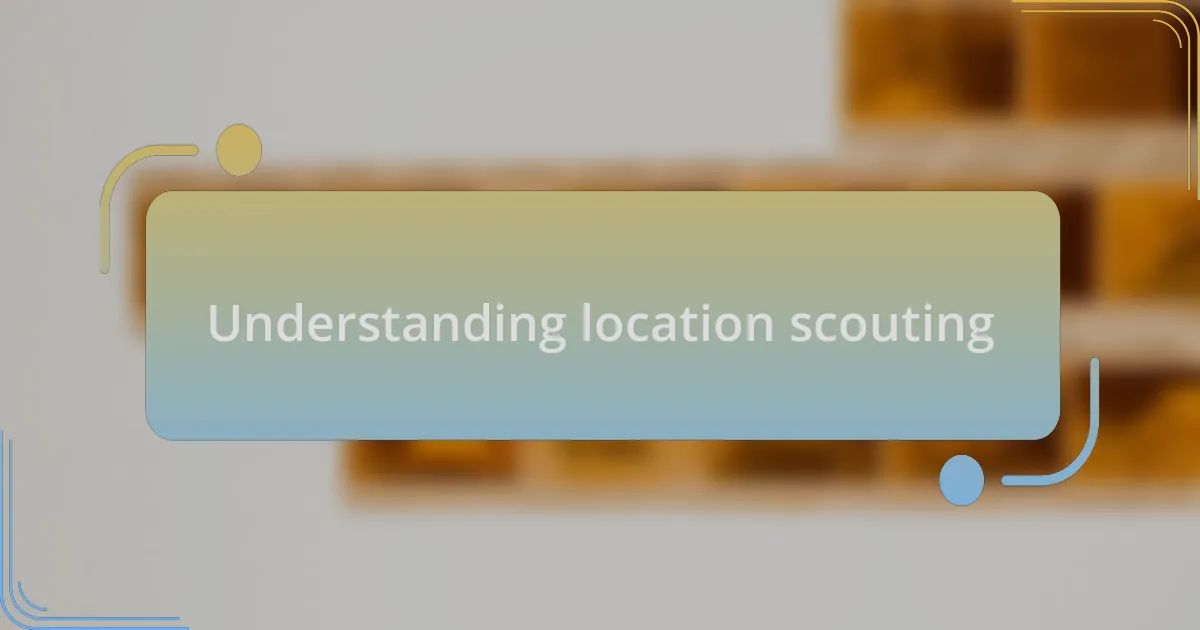
Understanding location scouting
Location scouting is much more than just finding a pretty backdrop; it’s about discovering spaces that resonate with the story being told. I recall a time while scouting for a short film, I stumbled upon an abandoned warehouse that seemed to whisper secrets of the past. The peeling paint, the dusty floors, it all added layers to our narrative that I couldn’t have planned for.
As I explore potential sites, I often think about how the atmosphere of a location can redefine a scene. Have you ever walked into a space that just felt right? In one memorable instance, a sunlit park brought an unexpected warmth to a dialogue-heavy scene, transforming it from mundane to captivating. These emotional connections are crucial; they help create a visual storytelling language that deeply resonates with audiences.
Every location tells its own story, and it’s essential to listen. I remember scouting a quaint little town where every corner sparked inspiration—colorful murals, lively streets, and even the local café with its charming barista. Engaging with locals can often lead to hidden gems that make all the difference in production, turning a simple shoot into an enriching experience for everyone involved.
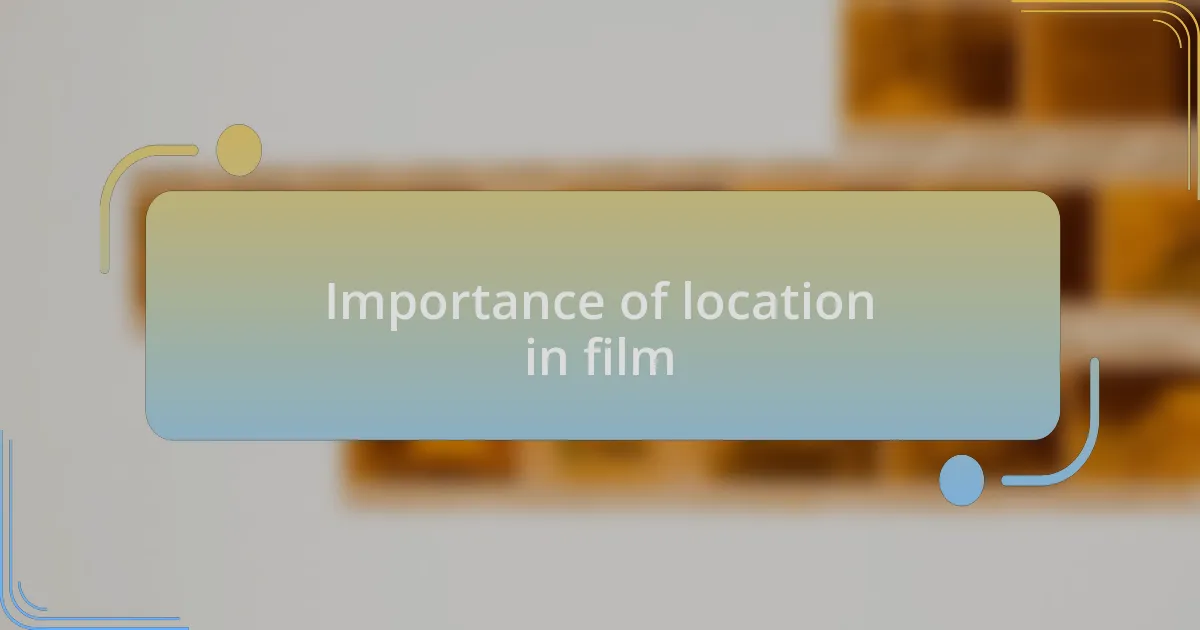
Importance of location in film
Finding the right location is essential in film, as it sets not only the visual tone but also the emotional landscape of the story. For instance, while scouting for a drama set in the 1980s, I was drawn to a vibrant diner that had a retro feel, with its neon lights and vintage decor. The moment I walked in, I could almost hear the echoes of the past—voices of laughter, the clinking of dishes. This ambiance wasn’t just a backdrop; it infused the scene with authenticity, grounding it in a specific time and place that made the story more relatable.
I often marvel at how a location can evoke a range of emotions. Consider a scene meant to capture the essence of longing or solitude; a stark, windswept beach can speak volumes where words fall short. There’s a place I visited that had the most breathtaking cliffs overlooking the ocean. Standing there, I felt a weight lift—every breath infused with the salt air sparked feelings of both freedom and isolation, reflecting the character’s internal struggle beautifully. Have you ever experienced a space that made you feel visible and yet utterly alone? That’s the power of location.
Moreover, the choice of a location can significantly influence production logistics and storytelling nuances. I recall a project where we initially planned to film in a bustling city square, but after some reflection, we opted for a more intimate alleyway. This change not only allowed for better control over sound and lighting but also created an intriguing contrast that deepened our narrative. Sometimes, less is indeed more, and discovering those nuanced spaces can lead to remarkable creative breakthroughs that elevate the film to new heights.
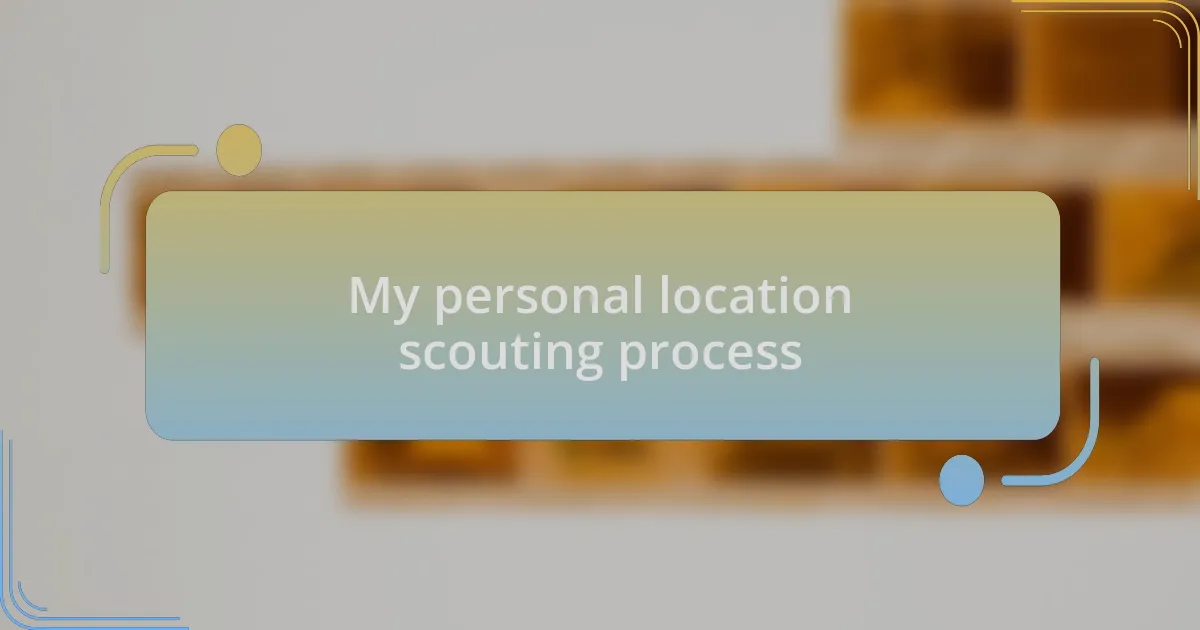
My personal location scouting process
When I embark on location scouting, my process often begins with a mental map. I like to visualize the emotional beats of the story and think about where those moments resonate best. For example, while planning a romantic scene, I instinctively gravitate towards charming, secluded gardens that offer intimacy paired with natural beauty. Isn’t it fascinating how certain places embrace us with their atmosphere, urging heartfelt connections in ways even the best dialogue never could?
Once I have an idea of the type of locations I’m after, I hit the ground running—I explore neighborhoods, seeking hidden gems that may not feature in standard directories. One time, while wandering through a forgotten part of the city, I stumbled upon an abandoned warehouse bursting with character. The decaying structure and peeling paint told stories of their own, rich with history and emotion. Wouldn’t you agree that sometimes the most extraordinary finds are nestled in unexpected corners?
My final step is to engage with the people around the location. I’ve learned that local insights can unveil nuances I’d otherwise miss. In one instance, a kind shopkeeper shared anecdotes about the area that inspired me to reimagine my narrative entirely. How often do we overlook the depth a personal connection can add to our storytelling? These relationships turn a mere location into a living, breathing character that enhances the film’s essence.
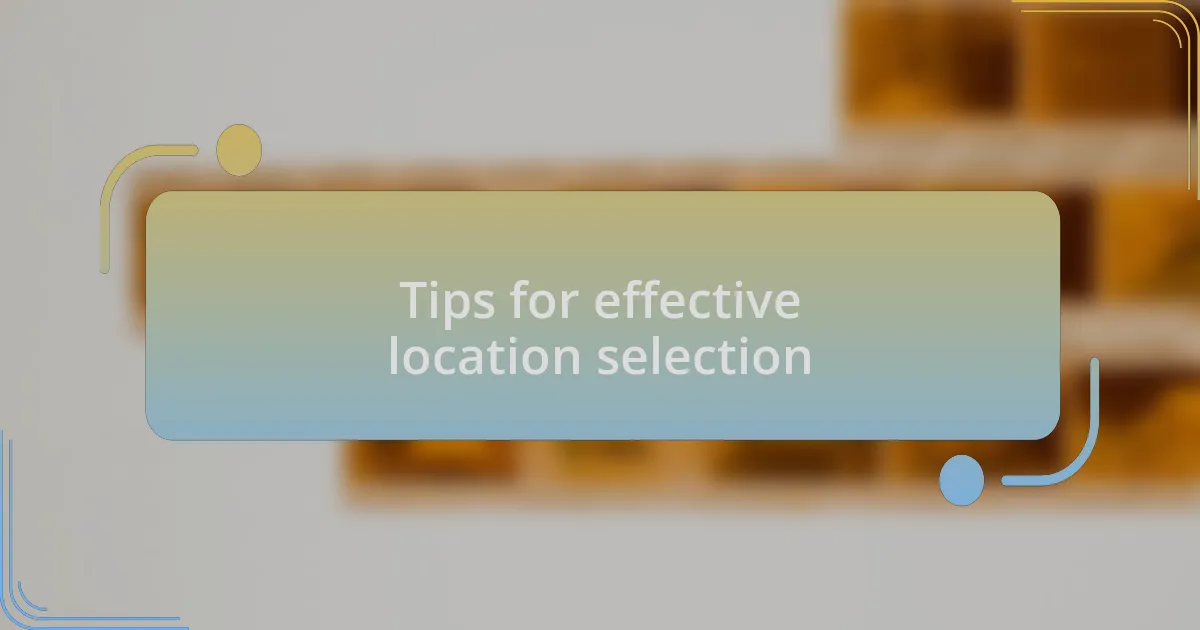
Tips for effective location selection
When selecting a location, consider its accessibility and logistics. I once scouted a breathtaking cliffside view, perfect for a dramatic sunset shot. However, the lengthy hike to get there made it impractical for a large crew and equipment. Reflecting on that experience, I realized the ideal location seamlessly marries beauty with practicality. Have you ever been tempted by a stunning spot only to find it difficult to set up?
Another tip is to think about the emotional resonance of a location. For instance, I was once drawn to an old train station, evoking feelings of nostalgia and longing. After a deep dive into the history of that place, I found it not only fit the narrative perfectly but added layers to the character development as well. How can a location amplify the emotional stakes of your story?
Finally, pay attention to the light at different times of the day. During a morning shoot at a picturesque vineyard, I noticed how the soft golden light breathed life into every frame. It made me reconsider the time of day I wanted to capture specific scenes. That experience taught me the importance of timing in location selection—do you often consider how light can transform a scene?
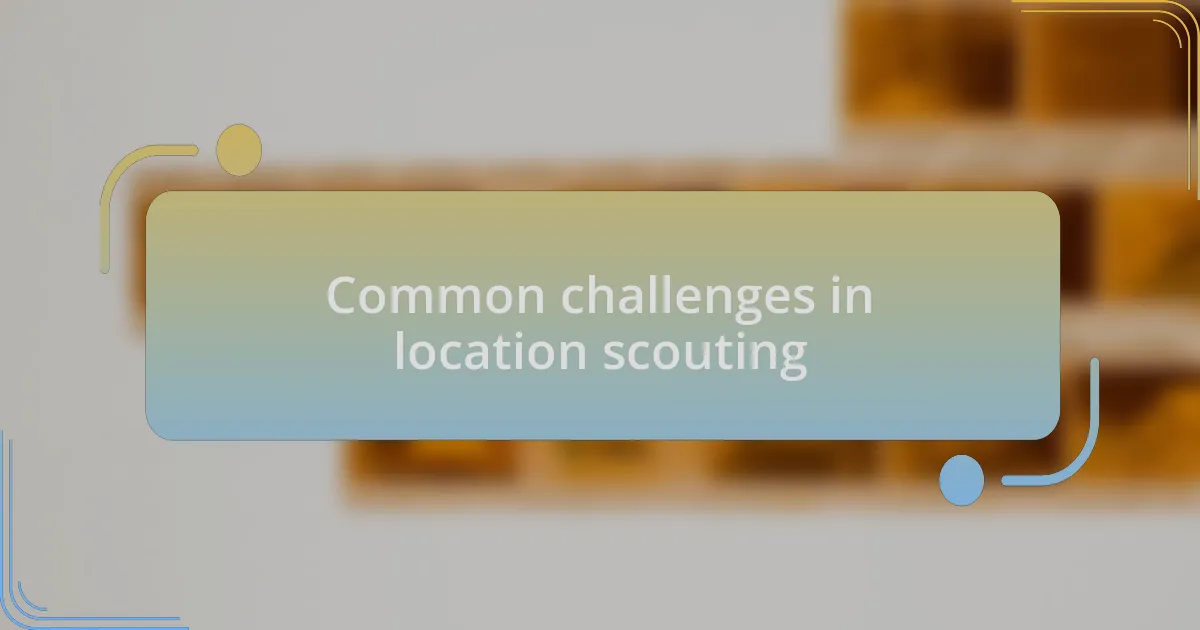
Common challenges in location scouting
Finding the perfect location can be an exhilarating experience, but it often comes with unexpected hurdles. I remember when I was scouting for an urban film set; the bustling streets offered endless visual potential. Yet, securing permits proved to be a maze of bureaucracy that delayed production by weeks. Have you dealt with the frustrations of red tape that seemed insurmountable?
Another common challenge is dealing with weather unpredictability. During one memorable shoot at a serene lakeside, the forecast called for clear skies, but a sudden storm rolled in, forcing us to rethink our entire filming schedule. That taught me to consistently factor in backup plans for inclement weather. How can you prepare for nature’s whims when they’re out of your control?
Lastly, competition for desirable locations can be fierce. When I finally secured a stunning historic mansion, I was thrilled, only to discover that another production team was vying for the same space. This experience underscored the importance of flexibility; sometimes, you have to pivot to a nearby alternative that can still deliver the desired aesthetic. Have you adjusted your vision to accommodate the reality of location availability?